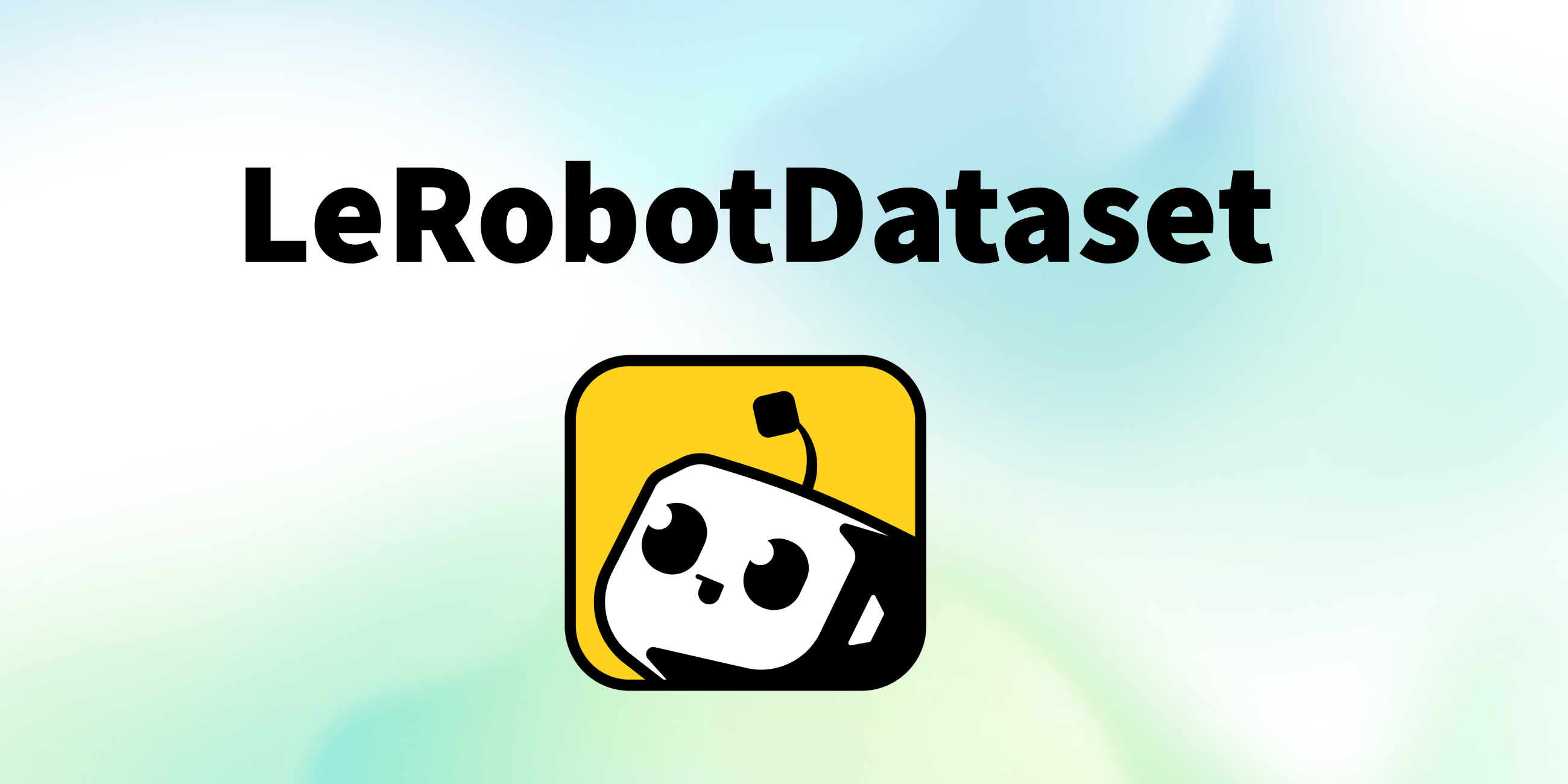
May 27, 2025
LeRobot Goes to Driving School: Training AI with the World’s Largest Open-Source Self-Driving Dataset
LeRobot Goes to Driving School: Training AI with the World's Largest Open-Source Self-Driving Dataset
What does it take to train an AI to drive? Imagine seeing an AI-powered vehicle handle a congested city street from the passenger seat. Real-time choices allow it to yield at junctions, avoid people, and turn gracefully. It learns that how?
It requires data-based driving instruction like a human. And not just data. This requires real-world driving situations including experienced and novice drivers, road barriers, traffic lights, and even unexpected people. That is where the L2D dataset and LeRobot come in.
This is the biggest open-source multimodal dataset for training autonomous driving AI. This dataset of 60 EVs in 30 German cities contains millions of real-world driving situations. The best part? The AI community may test, refine, and expand on it.
Let's explore how this dataset is changing self-driving AI, and we will even go through Python code so you can try it!
Why AI Needs Large-Scale Driving Data
Teaching an AI to drive is harder than giving it few guidelines. Coding "If light is red, stop" is not enough. Go when light is green. Real-world driving is harsh. Unexpected blockages, furious drivers, complex roundabouts, and human mistake occur.
Conventional self-driving datasets concentrate on perceptual tasks like pedestrian and lane recognition. But L2D goes beyond. This teaches AI how to respond to traffic conditions by learning from real driving rules.
Now things become interesting: L2D captures two driving styles:
- Expert Policies: Recommended driving tactics from experienced instructors.
- Student Policies: Learner drivers identify faults and poor actions.
AI can learn to drive successfully and recover from errors like a human driver by studying both.
Inside the L2D Dataset
This dataset contains what? Consider it an AI training black box recorder. Let's see what it captures:
- Six cameras placed on each car provide 360° RGB feeds.
- Accurate location tracking and motion understanding using GPS and IMU data.
- CAN bus data for speed, steering angles, gas/brake pedal use, and turn signals.
- Offers natural language driving training, similar to traditional driving schools.
It gives AIs everything they need to grow from uninformed novice to competent driver.
Hands-On with L2D: Loading and Exploring the Data
Start working with Python! First, load the dataset to see what we have.
from datasets import load_dataset
# Load L2D dataset from Hugging Face
dataset = load_dataset("yaak-ai/L2D")
# Print dataset structure
print(dataset)
Let's analyze some data. This is how you can see the front-left camera feed during a drive:
import numpy as np
import matplotlib.pyplot as plt
# Extract sample image and display
image_sample = dataset['train'][0]['observation']['images']['front_left']
plt.imshow(np.array(image_sample))
plt.title("Front Left Camera View")
plt.show()
But the images are only the start. The magic arises when we extract waypoints; the particular points AI should follow to drive successfully.
import geopy.distance
def compute_waypoints(gps_trace):
waypoints = []
for i in range(len(gps_trace) - 1):
dist = geopy.distance.geodesic(gps_trace[i], gps_trace[i + 1]).meters
if dist > 5: # Sample every 5 meters
waypoints.append(gps_trace[i + 1])
return waypoints
gps_data = dataset['train'][0]['observation']['state']['vehicle']['gps']
waypoints = compute_waypoints(gps_data)
print("Generated waypoints:", waypoints)This generates real driving pathways like a GPS.
Training an AI Model with L2D
Data in hand, let's discuss AI training. Train a model that simulates expert driving while learning from student errors.
Imitate learning, where the AI mimics human drivers, is one of the finest techniques. Following is a simple dataset-based AI model training setup:
from transformers import AutoModelForSequenceClassification, TrainingArguments, Trainer
# Load a pre-trained model
model = AutoModelForSequenceClassification.from_pretrained("bert-base-uncased", num_labels=2)
training_args = TrainingArguments(
output_dir="./results",
evaluation_strategy="epoch",
per_device_train_batch_size=8,
per_device_eval_batch_size=8,
num_train_epochs=3,
)
# Initialize trainer
trainer = Trainer(
model=model,
args=training_args,
train_dataset=dataset['train'],
eval_dataset=dataset['validation']
)
trainer.train()This is only the basics. Advanced AI training techniques like reinforcement learning and diffusion models may improve things.
What's Next for Open-Source Self-Driving AI?
The L2D dataset is just the start. More researchers and developers will lead to better self-driving models that know driving.
Even cooler? Safety drivers will supervise L2D-trained AI models in real-world closed-loop testing on cars. Thus, the AI you train today may drive on actual roads.
Conclusion
AI is improving its driving, but it still needs some tweaking to improve. L2D datasets let AI observe the road and respond like a human driver, and this is the game changes.
Why not try L2D if you love self-driving AI as I do? Download the dataset, run the code, and watch AI learn to drive. Who knows? Your effort might lead to the next autonomous car breakthrough.
What do you think? Would you trust L2D-trained AI drivers? Let's have a chat in the comments!
149 views
